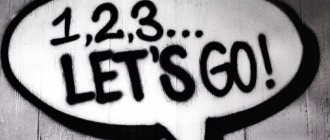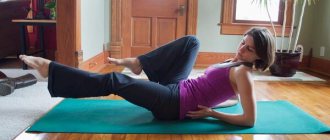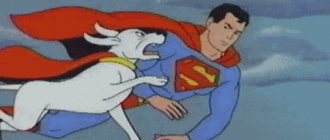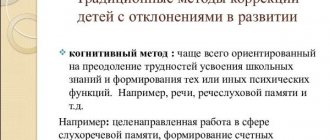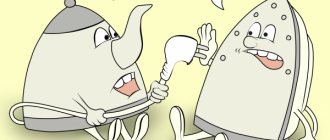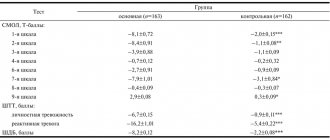Hi all! Usually, by the age of four, a child is determined to have a dominant hand. And if earlier he tried to do something or hold each of them, then from this age he can safely say whether he is right-handed or left-handed.
But there are people who masterfully control both one hand and the other. It is believed that their mental abilities are an order of magnitude higher than the average person, since the brain has to constantly be on its toes and creatively adapt to different tasks. They make up one percent of the planet's population, just imagine how few such “universal” people are. And today we will learn how to become ambidextrous to join their ranks.
The best basic exercises for different muscles
There are both basic and isolation exercises for each muscle group.
It is especially important to perform basic exercises for beginner athletes. This way, you will quickly lay a certain strength base, from which it will later be easier for you to build muscle, improve the functionality of your body, or increase record weights in strength movements
But it is not recommended for experienced athletes to abandon the base; in any case, it should make up the majority of your program.
It is worth noting that not all athletes will benefit from regular exercise. Many of them (such as deadlifts and squats) involve a strong axial load on the spine. It is not recommended to perform them for herniated discs and protrusions, especially in the lumbar region. In addition, performing these exercises with large working weights is quite a traumatic activity, and the slightest deviation from the correct technique can not only aggravate existing health problems, but also cause new ones to arise.
For beginners who train without a trainer, it is also better not to include deadlifts and squats with a barbell in their program, since learning the technique from scratch on your own will be quite difficult. It is better to first develop skills in working with iron using simpler basic exercises, and only then move on to complex ones. Or immediately start working with a trainer.
Below we provide a list of basic exercises for each muscle group. They are suitable for both men and women, the most important thing about them is the correct technique.
Indications and contraindications
If we put aside all the psychological aspects (many men have complexes about the size of their dignity and want to correct them), then there is also a medical need for correction of the penis. The indications are:
- Treatment of Peyronie's disease - curvature of the penis.
- Correction of shape and size after traumatic injury.
- Rehabilitation for increasing size after surgery.
- Congenital small penis size.
- Decreased libido and erectile function.
The effectiveness of wearing an extender depends on many factors, but on average it is 2 - 4 cm of length gain over several months of regular use. Contraindications are only diseases of the penis. If the instructions are strictly followed, there will be no side effects from the device.
How to develop ambidexterity
Anyone can develop ambitcerebrality, regardless of whether or not they are born with the ability to use both hands. It will take a long time to develop your second hand; patience and regular training are required. It may take several years to achieve the desired result.
To the question of how to develop ambidexterity, the answer is simple - there are several methods. You should start by performing simple actions with your non-dominant hand: you can use it to brush your teeth, apply cream to your face, or wipe off dust. You should not experiment with cooking at the initial stages, as you can get hurt and harm yourself.
When everyday activities are easy, you can move on to writing. It’s better to start with children’s copybooks: hooks, circles. When you start to get good at it, you can move on to letters, phrases, then write essays or letters, rewrite excerpts from books. You should use the skill as often as possible.
Development of ambidexterity
If there is an ambidextrous person in the family, there is no need to try to change him. Let him remain himself. (We have already said, “ambidexterity,” what this means. This means that both hands can perform the same functions. Moreover, any actions quickly and efficiently.)
Some people have this ability after birth and continue throughout their lives. But most often she disappears in childhood. Usually the emphasis is on the right hand. However, there is not only congenital, but also acquired ambidexterity. If desired, it can be developed with special training.
For example, slowly writing the alphabet with a hand that is less developed. Pay attention to what details in this lesson turn out poorly, and focus on this. Then start writing words, phrases and texts. Everything needs to be done slowly, you can’t rush. You can develop ambidexterity if you try to do all actions not with your dominant hand, but with the one that is less developed.
Pros and cons of ambidexterity
The advantages include good development of both hemispheres. Musical abilities and athletic achievements are often noted: since both sides of the body are well developed, a person can perform various complex techniques and elements better than those around him. In sports, changing hands will allow you to get less tired, which increases the likelihood of winning.
Damage to one of the upper extremities does not lead to temporary loss of capacity and severe deterioration in the quality of life, which is observed with injuries to the leading hand in left-handed and right-handed people. Many necessary actions can be performed with the limb that was not broken.
In critical situations, the ability to quickly analyze the situation and find an appropriate solution can save lives and help minimize damage. Ambidexters perceive the world around them more clearly than other people, since both logic and creative perception are well developed in them.
However, ambidexterity can cause negative conditions. Previously, when they tried to combat this phenomenon, children were subjected to strong pressure from teachers at school, which led to a deterioration in their emotional state and mental overload.
The latter are also possible due to the fact that a person is not able to switch. Right- or left-handed people, when experiencing strong negative experiences, can go into work and burden themselves with tasks in order to feel relief. With ambidexterity, this cannot be done, which leads to severe stress.
Some experts believe that people with ambidexterity are more susceptible to mental disorders due to constant excessive psycho-emotional stress. Pathologies and mental disorders develop especially often if the ability was specially developed. There is a tendency towards schizophrenia: among people with this diagnosis there are more ambidextrous people and left-handers than right-handers.
Parents may experience difficulties with upbringing: children with ambidexterity are more capricious, whiny, emotional, and are easily upset or angry.
The disadvantage is also a tendency towards bisexuality and homosexual relationships.
Ambidexterity - reasons
Ambidexterity is often a congenital trait, occurring in 0.4% of people. The reasons for the appearance of ambidextrous people are not completely clear. Geneticist V. Geodakyan, the creator of the evolutionary theory of asymmetry of the brain and paired organs, conducted a huge amount of research, analyzed statistical data and found out that ambidexterity is characteristic of:
- premature babies;
- twins;
- weakened newborns.
Causes of congenital ambidexterity:
- Genetic. The presence of the LRRTM1 gene, which is also responsible for the development of schizophrenia (there are more ambidextrous people among schizophrenics).
- During fetal development, the left hemisphere at some point begins to develop faster and more intensely than the right. Intrauterine hypoxia or other unfavorable factors affecting the fetus cause inhibition of the development of the left hemisphere and such a baby is born left-handed or ambidextrous.
Ambidexterity - psychological characteristics
Ambidexterity - what kind of person is this, and how does ambidexterity affect the brain? These questions are still largely open, because there are very few such people on planet Earth - only 1% of the total. The study of psychological characteristics is carried out mainly by observation, by taking an encephalogram and by analyzing handwriting by graphologists. Ambidexters have a contradictory nature, are neurasthenic and very touchy throughout their lives, but among them there are many brilliant, sensitive people who show the world something valuable: scientific discoveries, works of art.
How to become ambidextrous
Experts have developed a set of exercises that will help develop both hemispheres simultaneously. Careful adherence to the recommendations and regular training will help you become ambidextrous. However, we should not forget that the effectiveness of training directly depends on the age characteristics of the individual.
Exercises to reduce asymmetry between the hemispheres
- For the harmonious all-round development of both types of thinking, it is recommended to alternate diverse tasks. The simultaneous inclusion of creative tasks and logic exercises in the activity helps to reduce the asymmetry between the hemispheres.
- The ability to not rush to conclusions in a specific situation will help develop mental flexibility and gain control over emotions.
- Training fine and gross motor skills, alternating the dominant eye, ear, hand or foot is the easiest way to activate the rapid switching of hemisphere activity.
- Patience and perseverance are the engines of progress. You should not expect quick results or hope that there will be no difficulties.
Before performing exercises, it is recommended to relax, neutralize distractions and tune in to self-development and useful leisure.
Basic abdominal exercises
There are hundreds of abdominal exercises. Most of them can technically be classified as basic - since flexion/extension of the spine and hip joints occurs, and several muscle groups are involved in the movement in one way or another. Below we present some of the most popular and effective ones.
Hanging leg raises on the bar
This exercise works great on both the lower and upper rectus abdominis muscles. The lower part of the press receives a slightly greater load.
Usually, during the period of gaining muscle mass, to maintain strength tone in the abdominal muscles, it is enough to perform just one movement, because they already receive enough load from heavy squats, deadlifts and bent-over rows. Therefore, for this purpose, lifting the legs (or knees) while hanging is perfect.
Crunches
There are many variations of this exercise, but they are all aimed at performing the main anatomical function of the abdominal muscles - twisting the body.
It is important not to confuse crunches with sit-ups. Here we don’t just lift the body, but round the thoracic spine - this is the movement that ensures maximum contraction of the rectus abdominis muscle
The easiest option is on the floor without weights:
A little more complex - on a fitball:
Makatserchyk - stock.adobe.com
Even more difficult - with legs raised:
chika_milan — stock.adobe.com
For athletes with training experience and strong abs, it is better to perform crunches with additional weights:
fizkes - stock.adobe.com
Features of raising and working with ambidextrous children
Experts involved in raising young children have noticed that they are much more likely to exhibit ambidexterity. This means that the dominant hand in many children is not formed immediately, but at a later age. And often this is the age at which they begin to consciously copy the behavior of adults. The choice of the leading hand in children occurs either naturally and spontaneously, or under the influence of adults, primarily parents.
In past years, in our country, they tried to retrain ambidextrous people and left-handers, because their writing style was considered incorrect, and they themselves were considered “inferior.” Retraining not only did not benefit the child (and society), but also affected his mental and sometimes physical health.
As we have already said, “two-handedness” can be developed through training. And it is advisable to develop this skill in the early years, since it is more difficult to do this in adulthood. And there are people who are convinced that it would be a good idea to develop ambidexterity in all children, or at least in those who want to learn it. After all, ambidextrous people, simply put, think better. However, we indicated above that this phenomenon, like a coin, has two sides. Therefore, the best and most correct thing is to provide the child with the opportunity to develop independently in the direction in which he is comfortable.
Nowadays, in the most developed countries of the world, left-handers and ambidextrous people are no longer retrained. Moreover, many believe that left-handers and ambidextrous people are “special” people - more talented, intellectually advanced. This is also a controversial statement, but it is better than groundless harassment of people who write with the “wrong hand.”
In our time, left-handed people and ambidextrous people are retrained only in countries with a pronounced traditional way of life. For example, these are Muslim countries; in the Islamic religion, the left hand is considered “unclean”, so it is allowed to perform only “dirty” actions - for example, washing; Only the right hand is considered “clean”, and it is prescribed to perform all vital actions - taking food, writing, etc.
Ambidextrous children, however, have certain internal problems. They tend to switch between hemispheres, so to speak. Therefore, their behavior may be unpredictable and their school grades may be inconsistent. For example, today an ambidextrous child made the bed, but did not remove the toys from the floor, and tomorrow he will do the opposite - he will remove the toys, but will not make the bed. Today he very quickly understood the condition of a mathematical problem and successfully solved it, but tomorrow he may completely forget how it is solved and will not be able to cope with a similar problem.
What should parents do in this case? The answer is simple: they need to understand the developmental characteristics of their child and not find fault with them. Time will pass, and he will learn to understand his motives and inclinations, problems in education and behavior will be smoothed out, and the child himself will be able to demonstrate some outstanding abilities. Of course, this does not happen immediately; for many teenagers, both hemispheres begin to fully function only by the ninth grade.
Who is ambidextrous
Recently, changes have been taking place in the formation of the brain activity of humanity, and quantitative changes have been observed in the percentage of ambidextrous children in relation to those who have developed one leading system of perception and action (the percentage increases in its measurements from a few to 10-15%). And if relatively recently one could hear the question “ambidextrous, who is this?”, now this quality has become familiar, customary and desirable. People who did not receive this feature from birth develop equal control of both hands through exercises, performing habitual actions with the other hand, etc. What is characteristic is that the changes do not remain at the level of simple physical functioning, but affect the processes of brain activity and its specifics. Those for whom the right hand was the dominant hand, during the training process, notice the development of not only the ability to use the same hand, but also the discovery of creative inclinations that had not previously manifested themselves even in early childhood. Left-handed people notice how they have become more capable of structuring their time and planning future activities, based on factual analysis, rather than an emotional outburst.
An ambidextrous person cannot describe the peculiarities of his perception of the world as something different from the general one; most often one can hear “I just don’t care how to hold a mouse.” But ambidexterity concerns not only the hand, it determines the absence of a leading system in relation to any system of the body - a sighting eye, a pushing leg, a finely recognizing ear, all this is characteristic of people with a defining modality and is not characteristic of ambidexterity. They can always write with their right hand in a notebook, but on the board with their left hand, the visual system will be leading with the left, and the auditory system with the right. Depending on the circumstances or upon request, it will not be difficult for them to change a hand (leg, eye) and continue performing the work with the same quality.
Due to the cross-function of both hemispheres, an ambidexter can designate the features of his worldview as knowledge, without receiving information, by intuitive guesses. A subtle sense of the world and excellent logical skills help analyze and read information in a split second; thanks to this combination, it seems that such people see the future and draw information from space.
Ambidexterity looks like a special vision of the world, because where it is customary to observe only one component (or feelings, or reasoning), the ambidexter perceives a whole complex of concepts. Since our world is split, and we continue to do everything possible to further avoid the intersection of feelings and thinking on the same plane, it is at the same time quite difficult to understand what psycho-emotional and nervous overloads a person experiences, perceiving the picture more holistically. Ambidexterity is not only a gift, but also a curse.
Exercises and tips for training ambidexterity
To be able to use both hands equally well, you need to know how to train ambidexterity. It's pretty simple. Usually a person has a dominant hand (often the right). In this case, it is necessary to load the left one with the work that it usually performs. And try to do everything with this hand. But there are also left-handed people. In this case, the right hand is loaded.
When walking, it is better to change your usual routes and walk in the opposite direction. Start writing with the hand that is less developed. How to develop ambidexterity through exercise? There is a simple, but very effective, lasting fifteen minutes.
Take a piece of paper and two pencils. For fifteen minutes, different geometric shapes are drawn simultaneously with both hands. For example, on the left is a square, and on the right is a rhombus. As soon as this starts to work out well, you need to complicate the exercise. You can start drawing various complex figures, etc.
There is no substitute for lifting weights
If you're a competitive bodybuilder and you really need a big biceps peak for an upcoming performance, you'll definitely benefit from some single-joint exercises. But for most of us, they are simply not necessary.
I can't talk to every athlete, but many people choose single-joint exercises because:
- They think that presses or curls can be a substitute for complex multi-joint exercises; or
- They want to develop a specific muscle group or tighten lagging muscles to improve strength in basic exercises.
An example of the latter would be people who believe that doing leg extensions on a machine will help them with squats, or that they will be able to get more pull-ups after working their biceps directly. However, the truth is that simply increasing the volume of the compound exercises is a much more effective solution to this problem.
I know from personal experience that almost all athletes became bigger and stronger when they abandoned single-joint exercises for high training loads. Your body doesn't care about biceps, triceps or quads. It only assesses the intensity of the stress factor and adapts to the load, and therefore, well-chosen compound exercises with a high load are best suited for accelerating muscle growth.
And to help you get to your goal faster, I'll list my favorite compound exercises to replace popular single-joint exercises.
Instead of bicep curls, do pull-ups
Most rowing movements place stress on the biceps, but pull-ups are the most effective and powerful of all rowing variations. Pull-ups develop massive arms and a strong back at the same time, so they're a great, win-win option.
Instead of doing delt raises, do presses
The bench press and overhead press hit the deltoids. After the military press or bench press, do not rush to focus on working your deltoids, but add a couple of sets of bench presses and give your deltoids a heavy load.
Instead of leg curls - Romanian deadlift
To lift heavy loads and develop an athletic physique, you need strong muscles in the back of your torso. PCT trains the hamstrings to become larger and stronger while standing, which is much more applicable in sports and everyday life than bending the knees while sitting or lying down.
Instead of leg extensions - front squats
Squats are the king of lower body exercises. Many guys spend years perfecting their squat skills but fall short of success by neglecting the front squat.
When performed correctly, front squats are a safe movement that generates significant force, which is many times more effective than endless leg extensions in a machine.
Test to determine the leading hemisphere
To determine the presence of ambidexterity, you can conduct a simple test consisting of five tasks. There is no need to think before performing them; actions should be performed automatically and repeated several times.
- Close your fingers in a “lock”.
- Applaud.
- Cross your arms.
- Aim with both eyes alternately.
- Untie a few knots.
If the organs or parts of the body involved alternately change, we can talk about equivalent development of both hemispheres of the brain.
The most famous ambidextrous people
Among scientists, inventors, writers and show business people there are many brilliant personalities, which allows us to judge that such an innate or developed phenomenon as ambidexterity enhances a person’s creative potential. Famous ambidextrous people:
- Gaius Julius Caesar
. From history textbooks about the Roman politician and commander, it is known that he could simultaneously do several things at the same time, which suggests he was ambidextrous. - Nikola Tesla
. Engineer-inventor, Nobel laureate researcher of alternating current and magnetic fields. - Tom Cruise
. An American actor who brings together the weaker half of humanity with his dazzling smile - he is ambidextrous. Equally masterful with both hands in various actions. - Maria Sharapova
. The famous Russian tennis player confidently plays tennis with both her right and left hands. - Till Lindemann
. The frontman of the German band Rammstein, who has several professions and has mastered playing several instruments, is also one of the small percentage of ambidextrous people.
Features of the development of an ambidextrous child
Ambidextrous children have their own characteristics that can and should be developed. You can learn ambidexterity – it’s a matter of training. Change your habits, write with your left hand instead of your right, hang your bag on your right shoulder if you usually use your left, and so on. Change your usual routes from home to work, from work to the store. A great exercise for developing both hemispheres of the brain: take pencils in both hands and take turns drawing geometric shapes on a sheet of paper. For example, with the left you draw a square, with the right a circle, then with the left a rhombus, with the right a polygon and so on. Make the exercise more difficult and very soon you will notice how quickly you can cope with the task.
You can develop both hemispheres of the brain using the “Mental Arithmetic” technique. Both children and adults can take the course. Scientists have proven that the brain develops maximally with the help of calculations. Numbers are a kind of brain trainer. “Mental Arithmetic” consists of several levels. First, students learn to add and subtract on an abacus abacus by moving the bones with both hands, then they continue to do the same only mentally, imagining the abacus in their minds. As a result of regular training, students are able to perform 99 actions with single-digit numbers in 0.1 seconds, outpacing the speed of a calculator. These are the average indicators of those trained in mental arithmetic. You can master the technique at the AMAKids Academy for the Development of Intelligence. The founder of AMAKids, Vladimir Fedyai, adapted the classic course to the mentality of modern children. The method does not contradict the school curriculum and is based on a game approach to learning, and complex solutions provide guaranteed results. AMAkids students perform two actions simultaneously after just a month of training. For example, they count mentally and sing a song.
Basic exercises for chest muscles
Bench press
The bench press is a basic free weight exercise. To perform it, lie down on a bench, lower the barbell until it touches your chest, and then raise it until the elbow joint is fully straightened. The grip should be wide enough, wider than shoulder width. In bodybuilding, the bench press is used as an exercise to develop the muscles of the chest, triceps, and anterior deltoids.
Incline Bench Press
The incline bench press allows you to work the upper sections of the chest muscles (if performed in a head-over-toe position) or their lower sections (if performed in a head-down position).
Dumbbell press
When pressing dumbbells, the lowest point of movement is much lower than when pressing a barbell, which allows you to perfectly work the pectoral muscles. In addition, you can change the trajectory of movement, squeeze dumbbells located in parallel, bring them together at the top point, which engages new muscle bundles and has a slightly different effect on them.
Dumbbell flyes
Due to the fact that lying dumbbell flyes involve the same muscles as the bench press, the load is focused on the inner edge and middle of the pectoralis major muscle. In this case, the chest is given a convex shape, a clear separation between its muscles is achieved. Flying is also done to improve the relief of the pectoral muscles. By performing this exercise you can improve your results in wrestling, tennis, boxing, gymnastics, acrobatics, basketball, badminton.
Pullover
This assistance exercise is aimed primarily at strengthening the pectoral muscles, latissimus dorsi and, indirectly, the triceps. Pullover is usually performed as an additional exercise when working on the pectoral muscles.
Exercises for learning to write with your left hand
Learning to write with your left hand is a long-term process during which new neural connections are created and strengthened in the brain.
Therefore, whenever possible, try to practice and perform various actions with your left hand. Muscle development also plays a role, since most people do not have this arm as strong as their right arm. Let's start with these exercises:
- We write the alphabet. First you need to learn how to write block letters. If you find it difficult to do this on blank paper, circle the headlines in a newspaper or magazine. Then move on to capital letters - you can use special teaching materials for preschoolers for this purpose.
- We write proposals. Once you are comfortable with writing individual letters, move on to sentences. You can start with pangrams - phrases that contain all the letters of the alphabet (one of the most famous is: “Eat some more of these soft French rolls, and drink some tea”).
- We write the most common words. Pre-writing the most common words in the Russian language can prepare your muscles for extensive texts - a list of them is available on the Internet.
- We write texts. Choose a suitable small text and rewrite it from start to finish. For convenience, have someone dictate the text or load it into a computer program that synthesizes speech - then you won’t have to look away from the paper. Over time, you can increase the volume of texts.
Additionally, doing other exercises that can help you improve your left-hand skills will help:
- Draw simple shapes - circles, triangles, squares, sketchy people.
- Trace images of objects.
- Draw straight lines - from left to right and from top to bottom.
- Try writing in a mirror way - from right to left (as Semitic peoples do).
Throughout the day, force yourself to use your non-dominant hand regularly - you can do this by tying a string around your finger to act as a reminder. Follow these simple steps:
- Throw the ball with your left hand, trying to hit the target.
- Ask someone to throw you a ball and try to catch it.
- Take sports equipment in your left hand, for example, a badminton racket.
- Lift weights, such as a dumbbell or kettlebell.
- Perform household activities like a left-handed person, such as brushing your teeth, combing your hair, cutting vegetables with a knife, pouring tea into cups.
- Open and close doors, drawers, bags and briefcases with your left hand.
- Set your computer mouse to inverted mode and use it to the left of the monitor.
Ambidexterity - what is it, neurasthenia
Symptoms of ambidexterity are similar to neurasthenia. But this is not a disease. The fact is that ambidextrous people get tired quickly. But mental fatigue should not be confused with retardation. All the whims, hysterics and stress of ambidextrous people only provide the tired body with the necessary release. After such “explosions” people become calmer.
These violent emotions are the result of the action of the right hemisphere. The left is responsible for logic and is unable to perceive information that does not fit into it. Therefore, ambidextrous people may become touchy. And this is a sign of overstrain of the right hemisphere of the brain.
Scientists call neurasthenia an overstrain of thought processes. In this case, sometimes emotional release is impossible if fatigue occurs in the left hemisphere. The best option for relieving stress is to add emotions and reduce mental stress. Walk, dance, become romantic at least for a while.
Obsessive-compulsive disorder
People who suffer from obsessive-compulsive disorder are most often ambidextrous. They have a very critical attitude towards themselves, the emphasis is on abstract thinking. Based on these signs, we can already say that fatigue has accumulated in the left hemisphere of the brain.
Both cannot work well at the same time. One of the hemispheres of the brain will certainly become overworked. And, at first glance, one can assume that such a person will always be whiny and a failure in life. But there are clear examples that this is far from the case.
It is worth remembering Leonardo da Vinci, the compiler of the dictionary Vladimir Dahl and many other famous people. They were all ambidextrous. But this did not interfere with their careers and lives. They became celebrities who will be remembered for centuries.
Hypertrophy and single-joint movements
Mechanical stress, load volume and calories cause muscles to grow. This is a simplified explanation, but I prefer it to most other explanations because it is clear and easy to put into practice.
If you're looking to build muscle using this regimen, it's clear that the high-impact exercises that create the most mechanical (muscle) tension use the most muscles. Think about how many joints and muscles are involved in squats, deadlifts, presses and rows. There is nothing supernatural in these movements. Yes, they are difficult and complex, but when performed correctly, they create such a load on the muscles that no isolated exercise can compare.
This is also true in relation to the load volume. To achieve the kind of muscle growth stimulation that heavy compound movements provide, you will need an unrealistic amount of single-joint exercises.
Without exception, all compound movements are the most effective use of the precious time you spend in the gym.
What is ambidexterity, who is ambidextrous
An ambidexter is a person in whom both upper limbs function equally well. Such people feel comfortable writing, holding cutlery, and peeling potatoes with both hands. The word comes from two Latin words: “ambi” - “both” and “dexter” - “right”. A child can be ambidextrous from birth; there are only about 1% of such people. Abilities can be developed in adulthood, so the number of people with ambidexterity is not so small. If it is difficult to control both limbs, the person is called an ambisinister.
Such people can write a word or draw a geometric figure with both hands at the same time, make decisions faster than others, and are often characterized by increased activity. They often prefer to use their hands for different purposes: they can write more often with their right hand, or hold utensils with their left. As the number of connections between the hemispheres is increased, mood changes often occur.
Ambisinisters
Ambisinists are unable to control both hands well. They are the exact opposite of ambidextrous people. Such “crookedness” is either congenital or acquired. Not only has a person forgotten how to do something, but, for example, after a serious illness he has lost sensitivity. Survived the accident and was injured.
And then the ambassador has no choice whether to develop or not; they have to perform exercises in order to regain power over their hands. To finally get a satisfactory result of your actions. And in some cases, with good motivation and willpower - not just satisfactory, but the best.
Ambidexterity - how to develop
The development of ambidexterity suggests that a person begins to better use the creative potential inherent in him due to the formation of new neural connections and harmonization of the cerebral hemispheres. Right-handed people begin to develop intuitive abilities, and left-handed people sometimes lack logical, reasoned thinking, which right-handed people have in abundance. Training and exercises help both achieve their goals.
Ambidexterity - exercises
Developing ambidexterity in yourself is not that difficult. Discipline and daily practice will give results over time. Exercises for developing the second hand and synchronizing both hemispheres:
- perform normal daily work part of the time with the “weak” hand (right-handers - left, left-handers - right);
- juggling – helps to use both hands equally;
- embroidering alternately with both hands;
- learning to play musical instruments: piano, button accordion, accordion;
- ten-finger typing practice on a keyboard;
- simultaneous drawing on two sheets of paper: the right hand draws a square, the left hand draws a triangle;
- “mirror drawing” - drawing identical symbols, letters, figures with both hands.
Acquired and congenital ambidexterity
All children are born ambidextrous. But by the age of four they lose the ability to use both hands at the same time. This is largely due to parental influence, the intervention of doctors and teachers. The child is forced from all sides to use his right hand. With it he holds a spoon, a cup. One is taught to write with the right hand. As a result, such children turn out to be excellent performers in the future, but without creativity.
Acquired ambidexterity is the result of training a less developed hand (the return of the ability to use both hands well at the same time, lost in childhood).
Basic shoulder exercises
Let's look at the most effective exercises that will help strengthen your shoulders.
Bench press standing or seated
In this movement, you work all three deltoids, triceps, and a little of the upper chest. But in any presses up (even from behind the head), only the front bundle receives the greatest load.
This movement places a fairly strong axial load on the spine, so it is recommended not to push for record weights and, if necessary, use an athletic belt. If you want to reduce the stress on your lower back, do the seated barbell press instead. But even here the load is not completely eliminated - with a sufficiently heavy barbell, the athlete automatically bends in the lower back.
There are still numerous debates regarding the correct way to lower the barbell: behind your head or in front of you. The beam that works here is the same - the front one. But lowering behind the head is an extremely dangerous movement for the shoulder joints. If you don't have some flexibility in your shoulder girdle, you are more likely to get injured. So you should do this exercise only in the form of chest drops.
This also includes seated presses in Smith. Here the trajectory of movement is set by the design, fewer stabilizer muscles are activated, and cheating is eliminated due to a slight squat.
Dumbbell press sitting or standing
An alternative to the barbell press. There is no particular difference between the exercises, it’s mainly just a matter of individual preferences, for example, it’s easier for someone to feel the work of the deltoids with dumbbells. You can do similar presses with each hand alternately or use weights for this.
Makatserchyk - stock.adobe.com
A variation of this exercise is the Arnold press - when the dumbbells are turned towards you when lowered. Thanks to this, the rotator cuff muscles are also involved.
Barbell row to the chin
Despite the fact that the target muscle group when performing a barbell row to the chin is the middle delta, this row (or simply a pull-up) should be considered the base. In addition to the middle delta, the biceps, forearms and trapezius muscles also actively work here. With a narrow grip, the emphasis shifts from the middle to the front delts.
Regular stretching will help you create broad shoulders and add bulk to your entire upper body. There is only one thing - do not overdo it with the working weight. 40-50 kg is the weight with which experienced athletes with impressive muscle mass perform chin pulls. If your training experience is still short, do not run ahead of the train, limit yourself to working with an empty bar, this will be much more useful.
If you don’t have a barbell, the movement can be performed with dumbbells.
ruigsantos - stock.adobe.com
What to do if your child was born ambidextrous
About 100 years ago, teachers and doctors talked about the need to artificially force all children to perform household operations with their right hand. Lefties and underdogs were retrained. However, the emergence of a person-oriented approach requires the unconditional acceptance of the child’s personality and the development of his unique natural inclinations and abilities. This means that the parents of an ambidextrous child should not forbid him to do certain things in the way that is convenient for him. Today, a child writing with both hands evokes interest, surprise, but not condemnation or anger.
Forcing children to use their right hand as the dominant hand remains today only in Muslim countries. This is due to the traditions of the eastern people: they are prohibited from using the left hand for most social actions, since it is considered dirty (people only use it to perform hygiene procedures in the bathroom).
When raising an ambidexter, parents should adhere to the following rules:
- understand and accept the child’s individuality;
- stop trying to make your baby comfortable;
- be tolerant of the child’s absent-mindedness and inconstancy of his behavior;
- help the child socialize, teach him constructive interaction;
- help the child develop his talents, stimulate the desire to engage in creativity.
Attempts to force a left-handed person to write with his right hand, as well as attempts to prohibit an ambidexter from doing anything with his left hand, are not only pointless, but can also negatively affect the child’s mental and physical well-being.
